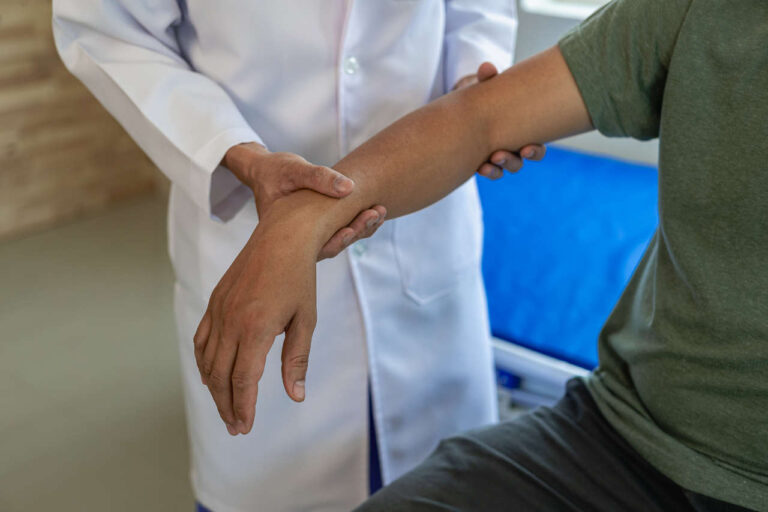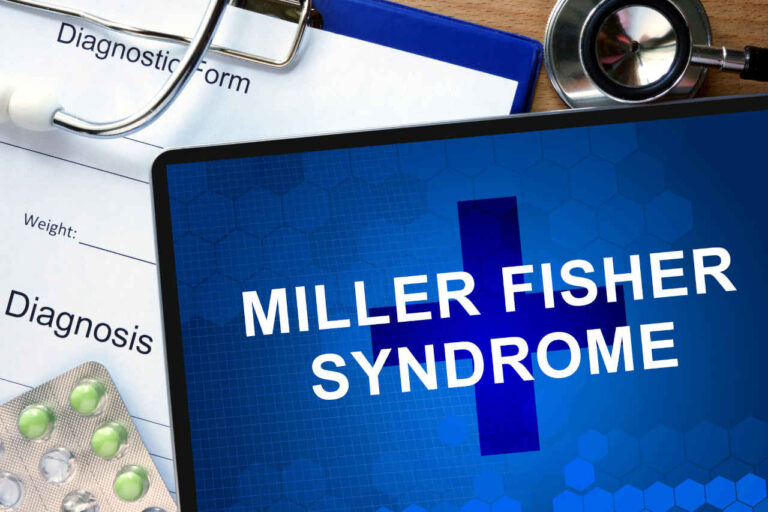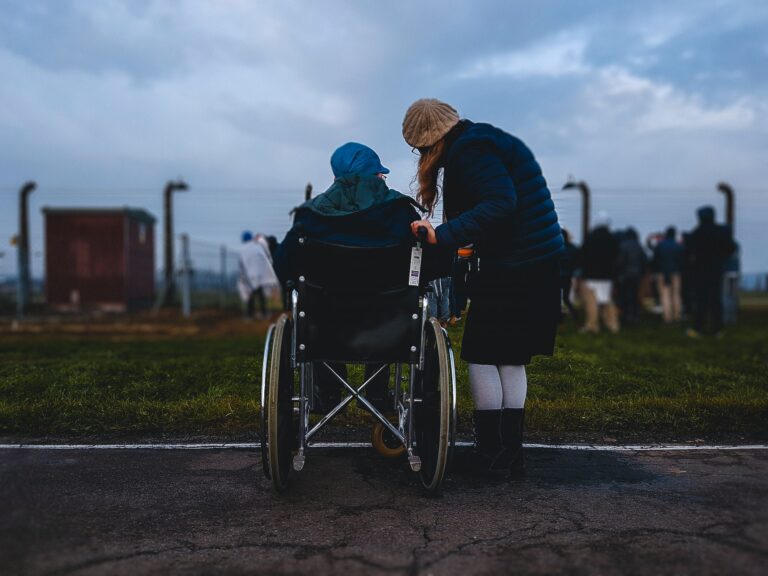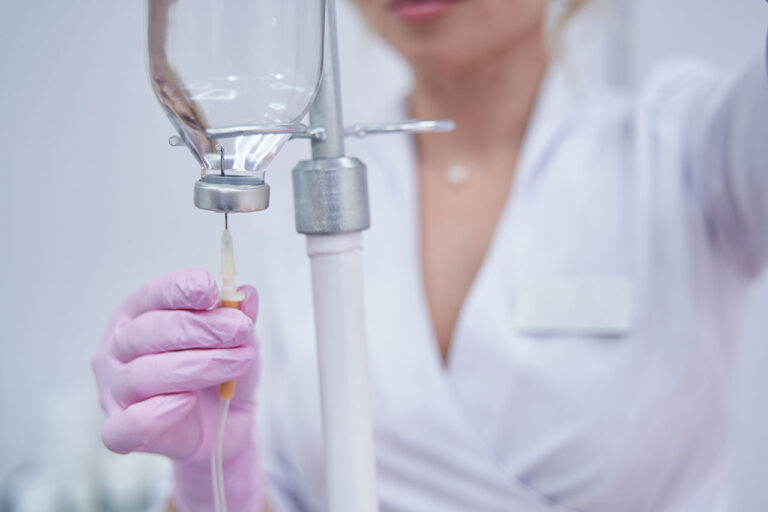
Guillain-Barre syndrome is a rare, rapid-onset neurological condition in which the body’s immune system attacks peripheral nerve cells, possibly leading to paralysis.
This autoimmune disorder affects the arms and legs, and early symptoms include pain, weakness, and numbness. It begins as a tingling sensation and then progresses to the fragility that affects both sides of the body, worsening over time.
Patients may also experience weakness in the respiratory muscles. This weakness can turn into a medical emergency requiring mechanical or assisted ventilation. There are currently no cures for Guillain-Barre syndrome, but there are several treatments that have been shown to be effective in increasing the rate of recovery and the severity of the condition.
How Common Is GBS?
Now that you know what GBS disease is, let’s discuss who is at risk of developing this disorder.
The prevalence of GBS in the U.S. is one to two cases per 100,000 individuals. GBS is rare, and each year, about 3,000–6,000 people develop the disease.
The risk of hospitalization increases with age, with around nine instances for every 100,000 people over age 70. For pregnant women, there are roughly 2.8 cases per million. This number includes patients that develop GBS up to 40 days after delivery.
Can IVIG help?
Free IVIG Treatment Info | Difficulty In Diagnosing?GBS Symptoms
The exact cause of Guillain-Barre syndrome is unknown. Two-thirds of GBS patients report symptoms of an infection within six weeks before diagnosis. These infections can include respiratory, gastrointestinal, or Zika virus infections.
So what is causing GBS disease? Possible GBS causes include the following:
- An infection of Campylobacter jujeni, a bacteria that causes diarrheal illness. One of the risk factors for getting this infection is eating undercooked poultry
- Haemophilus influenzae, a bacteria that can cause respiratory infections, particularly in children and those with weakened immune systems
- A viral illness caused by hepatitis, HIV, influenza, cytomegalovirus, COVID-19, or Zika virus
- Cancers such as Hodgkin lymphoma
- Trauma or surgery
- Vaccinations
How Is Guillain-Barre Syndrome Diagnosed?
Common diagnostic tests include cerebrospinal fluid (CSF) testing, nerve tests, and nerve conduction studies.
The doctor will start by obtaining the patient’s medical history and conducting a physical exam. Based on the findings, the doctor will then recommend one of the following diagnostic tests to determine if what the patient has is GBS disease.
Cerebrospinal Fluid Testing
Doctors insert a needle into the spine in a procedure called Lumbar Puncture (LP) to collect cerebrospinal fluid (CSF). The CSF is then analyzed for changes that commonly occur in people who have Guillain-Barre syndrome.
Nerve Tests
Your doctor may conduct an electromyography test. The doctor will insert thin-needle electrodes into your muscles to measure nerve activity.
Nerve Conduction Studies
In nerve conduction studies, your doctor will tape electrodes to the skin above your nerves. Then a small shock is passed through the nerve to measure the speed of nerve signals.
GBS Subtypes
The symptoms of GBS vary depending on the subtype:
- Acute inflammatory demyelinating polyneuropathy (AIDP): This is the most common subtype in North America and Europe. The most common sign of AIDP is muscle weakness that starts in the lower part of your body and spreads upward.
- Acute motor axonal neuropathy (AMAN): This subtype is less common in the U.S. but more frequent in China, Japan, and Mexico.
The symptoms of these variants often overlap, so it’s difficult to identify the exact subtype. The treatment for these subtypes will be similar. These treatments will involve varying dosages of IVIG depending on the patient’s Guillain-Barre stage and severity.
Get Your IVIG Dose
At-Home InfusionWhat Is the Link Between GBS Disease and Pregnancy?
GBS in pregnancy can lead to respiratory and neurological problems. Patients often require respiratory support and monitoring, especially during labor.
Doctors manage Guillain-Barré syndrome during pregnancy using intravenous immunoglobulin or plasma exchange. Other measures include venous thromboembolism prophylaxis, aggressive physical therapy, pressure ulcer prevention, enteral nutrition, and respiratory support.
IVIG Infusion for GBS
In Guillain-Barre syndrome, the immune system produces antibodies that attack the nerves.
Intravenous immunoglobulin (IVIG) infusion is a potent therapy to help modulate the body’s immune system. In this therapy, doctors inject antibodies through the veins. These healthy antibodies help stop the harmful antibodies from damaging your nerves. These infusions help to alleviate the severity and symptoms of this condition, but will not cure Guillain-Barre syndrome.
While several other mechanisms are also involved, IVIG mainly benefits Guillain-Barre patients by soothing the damage and inflammation to the nerves. The body’s response to IVIG and its recovery from GBS is measured by the IgG levels in the blood.
IVIG Treatment Dosages
Intravenous infusion of immunoglobulins is the treatment of choice for patients diagnosed with GBS. It is injected at a rate of 2g per kg of body weight over five days, with 0.4g per kg of body weight injected daily.
It is crucial to have the necessary IgG levels in the blood to optimize recovery. The IgG antibodies possibly work by neutralizing the action of autoantibodies that play a role in the autoimmune progression of the disease.
IVIG Side Effects
Now that you know what GBS disease is and how to treat it, you should know about the treatment’s side effects.
IVIG treatment for Guillain-Barre can cause immediate or delayed side effects and will vary depending on each patient.
Immediate side effects may include fevers, headaches, skin reactions, high blood pressure, and irregular heart beats (arrhythmia). Delayed side effects include clotting risks and renal impairments.
Second Dose Administration
In some reported cases, patients do not show any improvement and may need to receive a second dose. The second dose is often administered 7 to 9 days after the first one.
However, there is inconsistent evidence to support the use of a second dose of IVIG for GBS. Therefore, the use of a second dose for IVIG is not commonly recommended. A second dose of IVIG should only be administered under expert guidance. The use of a second dose might also increase the risk of side effects that may outweigh the benefits of treatment.
What to Expect After IVIG Treatment
IVIG treatment can be in the form of infusion center or home infusion settings. AmeriPharma offers both types of solutions. Each treatment course lasts for up to 5 days. The recovery time for GBS can vary. It is often a slow process that can take between 6 and 12 months. In some cases, improvement of GBS symptoms can take up to three years.
About 80% of adults recovering from GBS can walk independently 6 months after diagnosis. In addition, about 60% of adults fully recover motor strength after one year. However, delayed or incomplete recovery is experienced by 5% to 10% of adults with GBS. Children, who rarely develop Guillain-Barre syndrome, generally recover more completely than adults.
In addition, most of the symptoms tend to linger to some degree. Persistent symptoms can range from nerve damage to permanent limb weakness. However, some people make a full recovery.
Regardless of the severity of symptoms, if you or someone you know has GBS, contact AmeriPharma to speak with a specialist.
Get IVIG Copay Assistance
Speak to a SpecialistFAQs
How do you catch Guillain-Barre Syndrome?
What causes GBS disease is unknown. However, researchers believe that GBS might come from infections caused by Campylobacter Jujeni or viruses such as HIV, COVID-19, influenza, and hepatitis.
Can Guillain-Barre syndrome be cured?
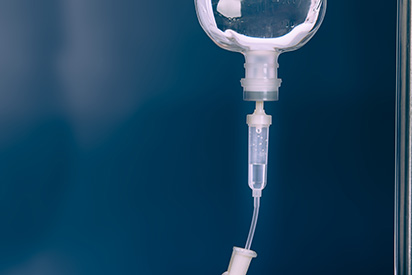
There is no cure, but patients recover from symptoms of Guillain-Barre syndrome with IVIG. Most people with Guillain-Barre syndrome experience this general timeline:
- After the first signs and symptoms, the condition worsens for about 2 weeks.
- Symptoms reach a plateau within 4 weeks.
- Recovery begins, usually lasting 6 to 12 months. However, it could take as long as 3 years for some people.
How does Guillain-Barre syndrome affect the body?
GBS causes damage to peripheral nerves. The symptoms can include tingling, numbness, muscle weakness, and paralysis.
Can IVIG cure Guillain-Barre syndrome?
IVIG can help improve GBS symptoms. However, the speed of recovery can vary greatly between individuals.
How many doses of IVIG are necessary for Guillain-Barre syndrome?
One dose over 5 days is best. However, a second dose might be necessary in some cases. If IVIG does not work, you might need plasma exchange as an alternative.
What foods should you avoid with Guillain-Barre syndrome?
Eating healthy foods can help your body heal. Try to stay away from things like junk food, sweets, and alcohol, because they can cause more swelling in your body and hurt your nerves. Instead, eat foods that are good for you, like fruits, vegetables, and foods that help your nerves get stronger.
Further reading: Best Diet for Guillain-Barre Syndrome



